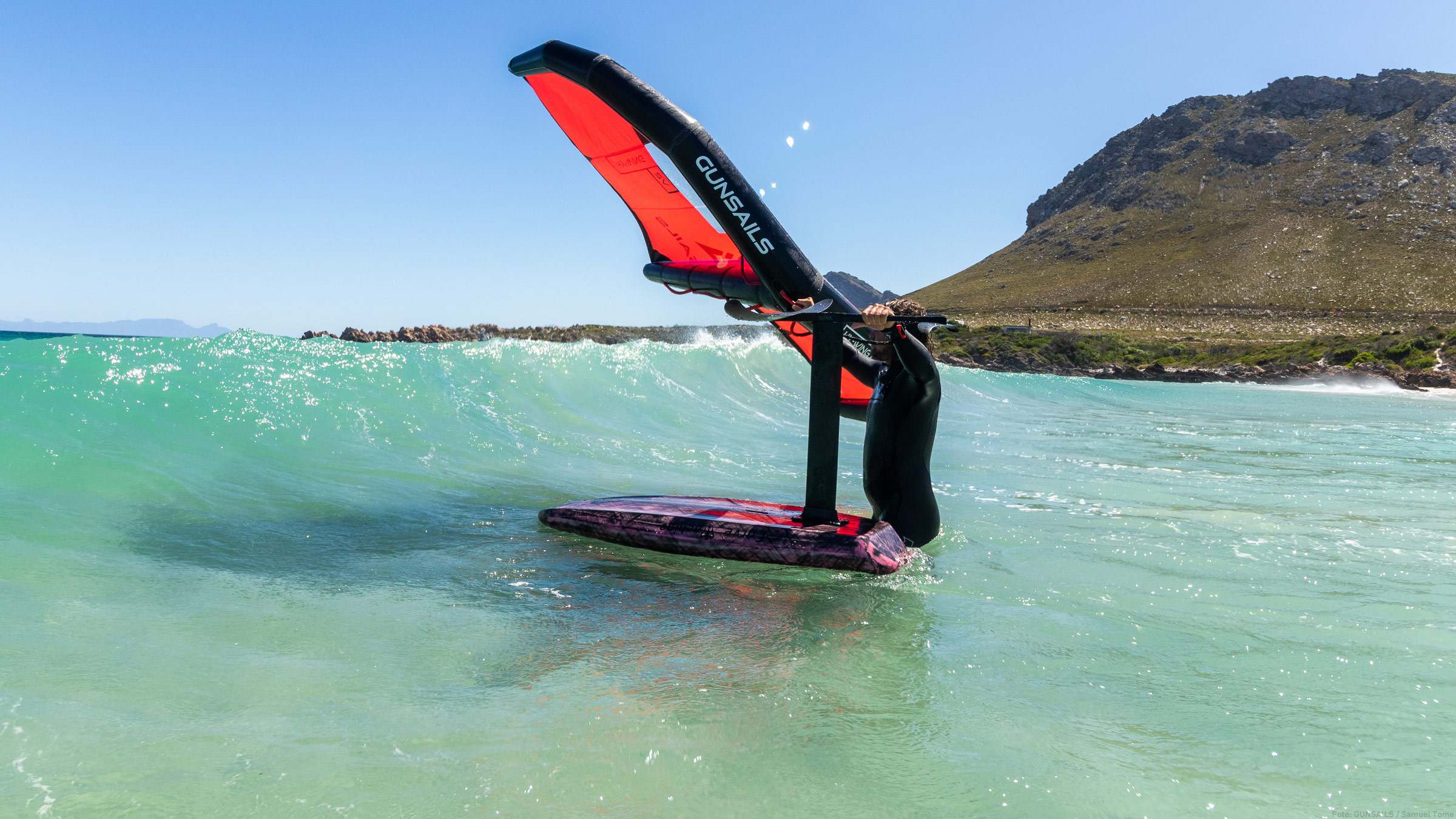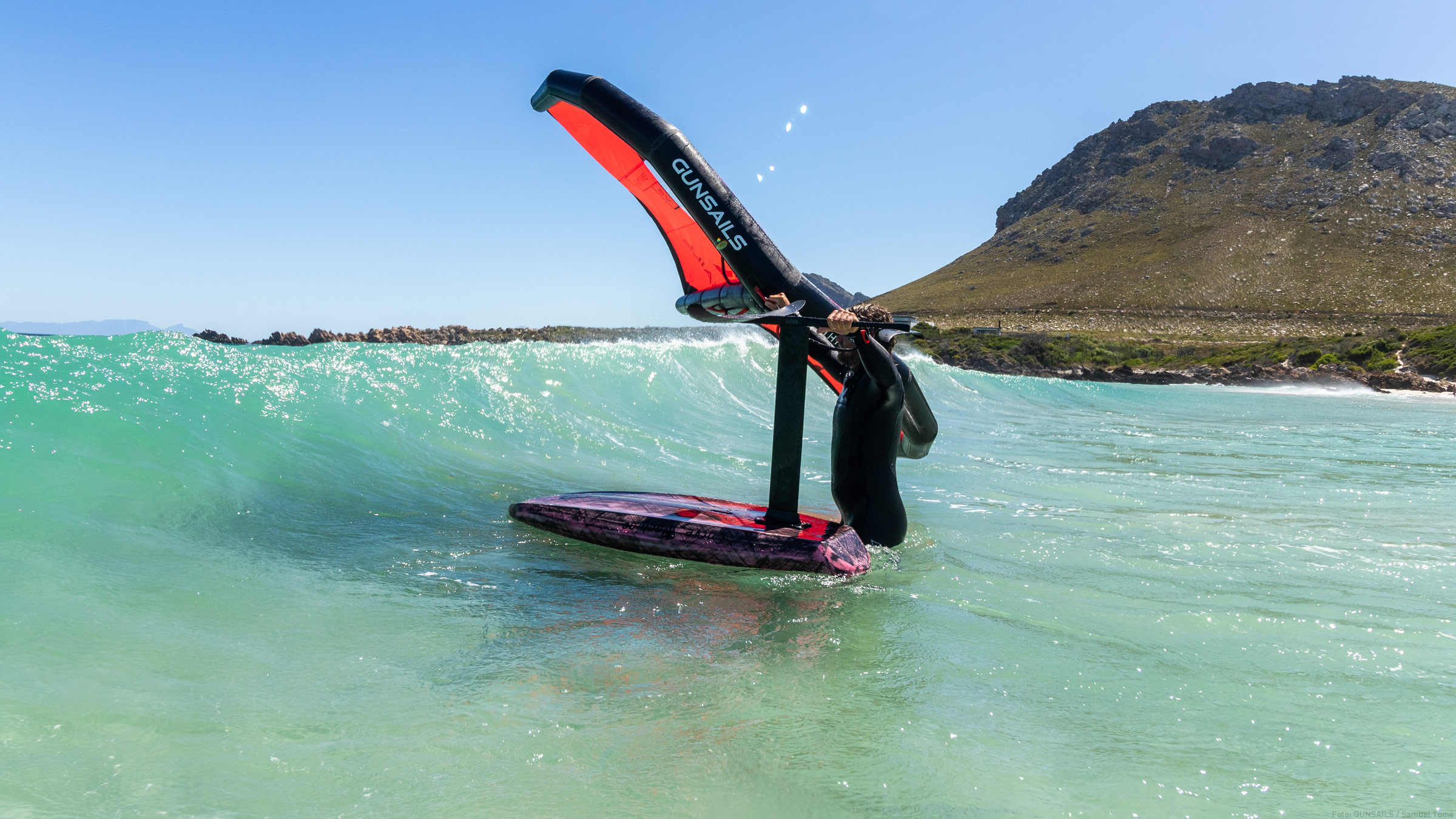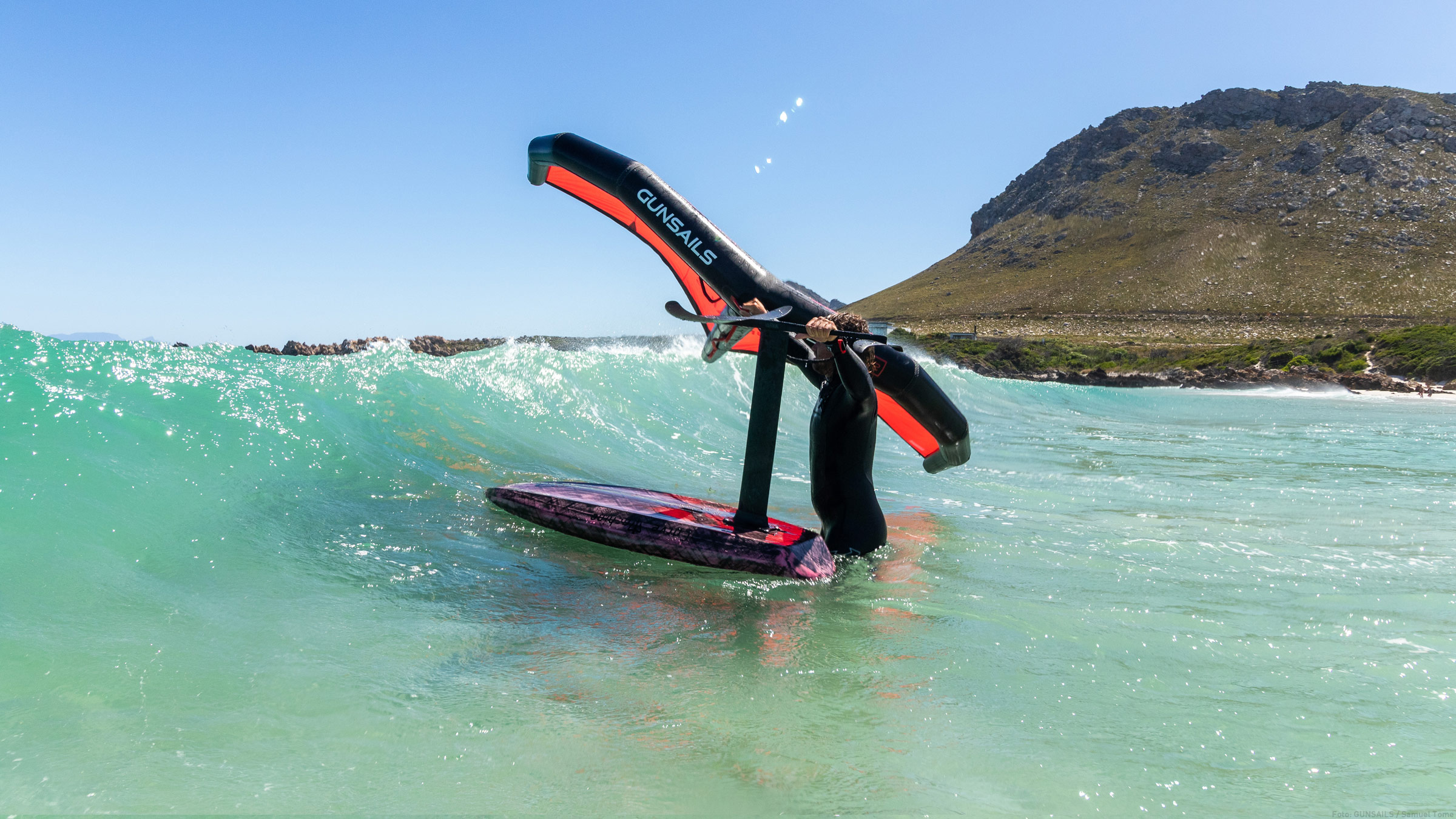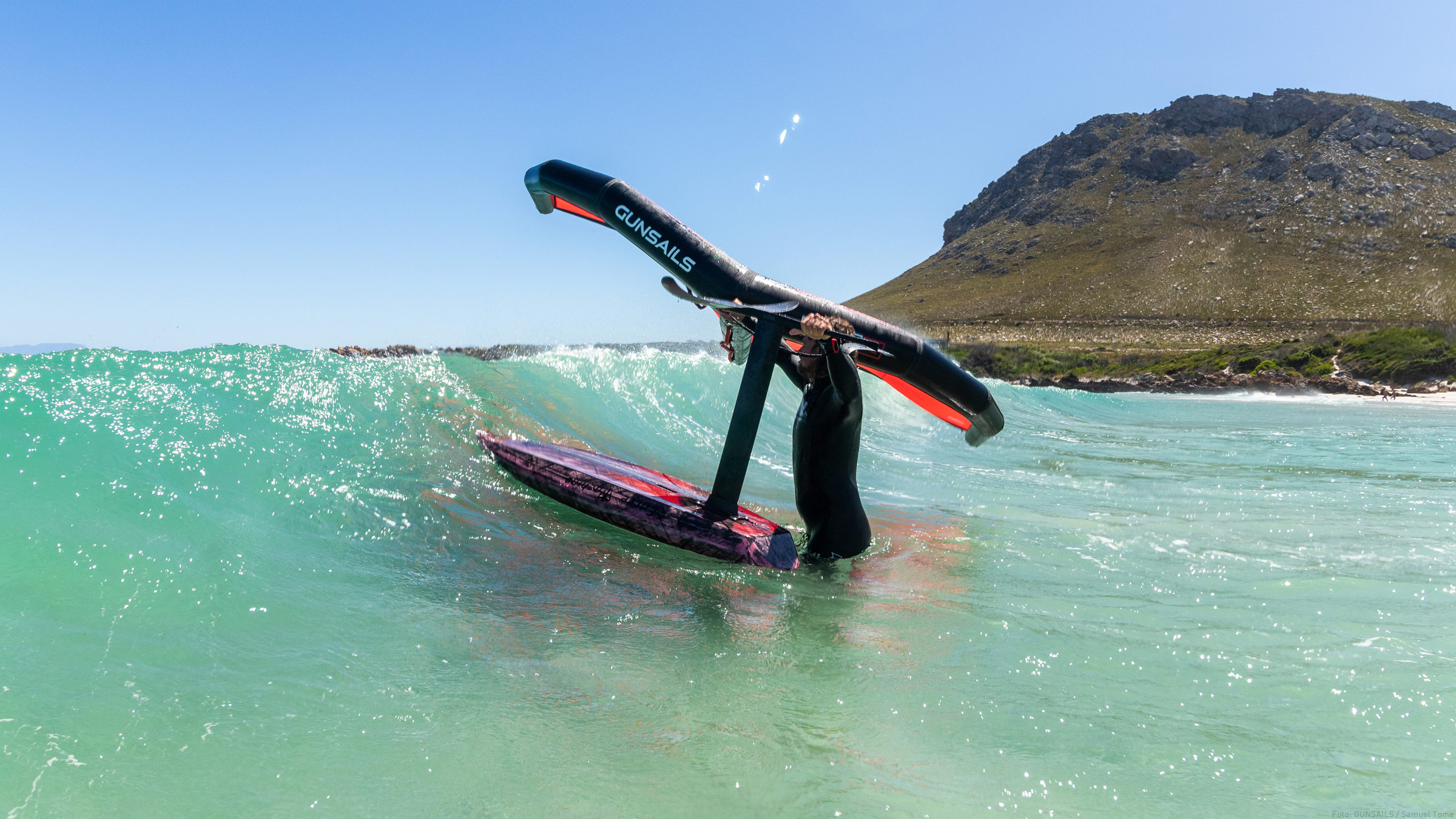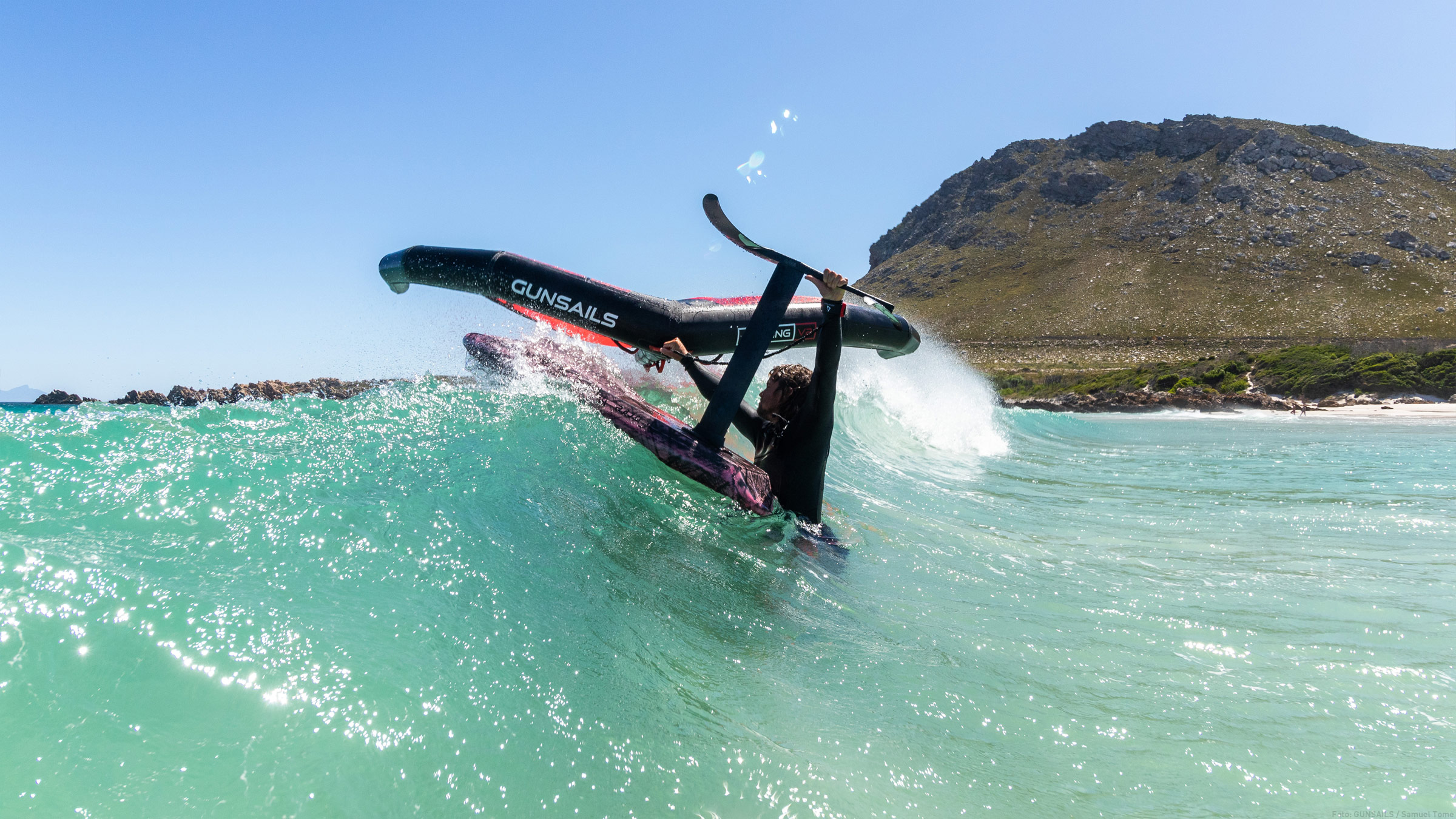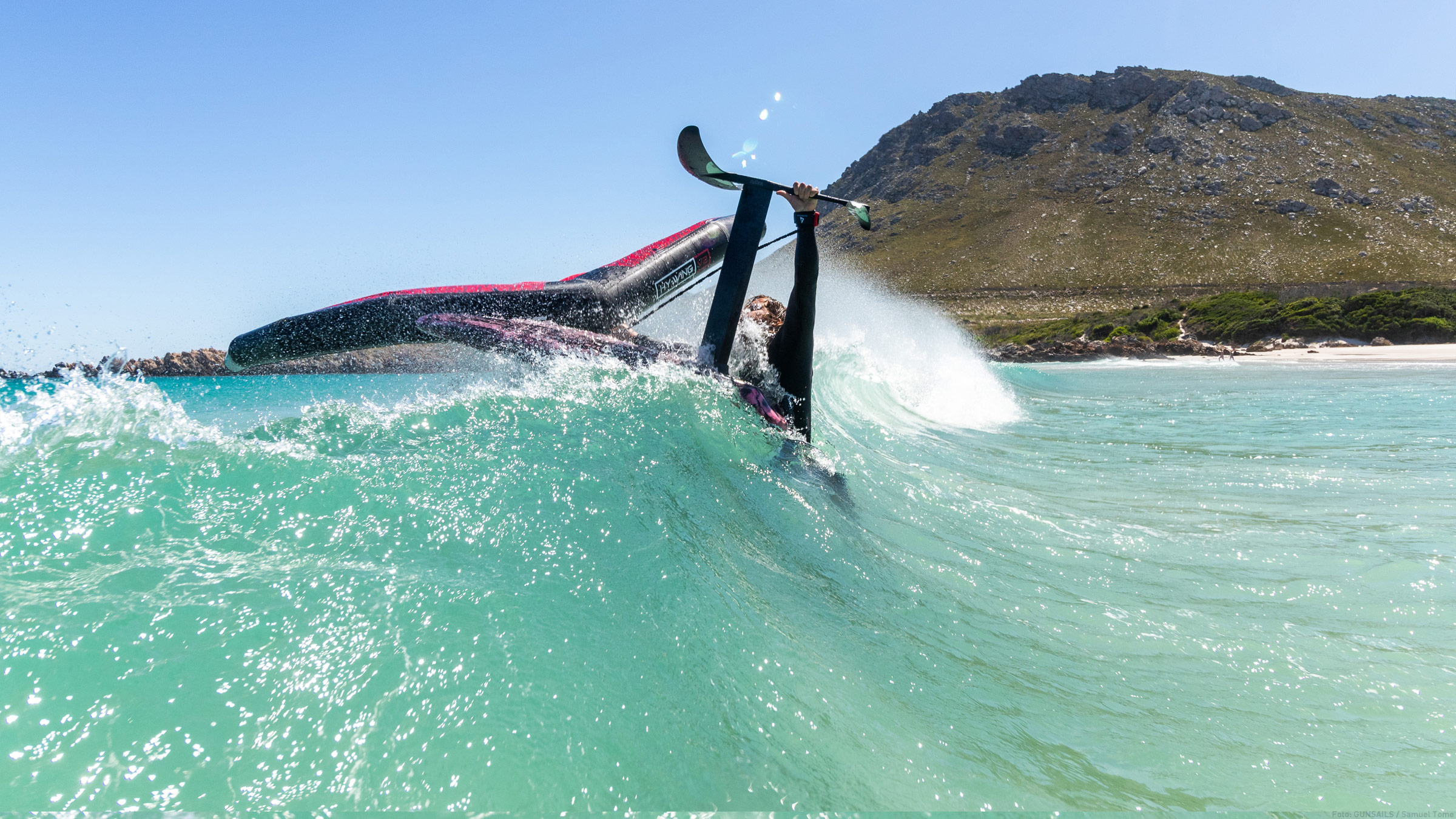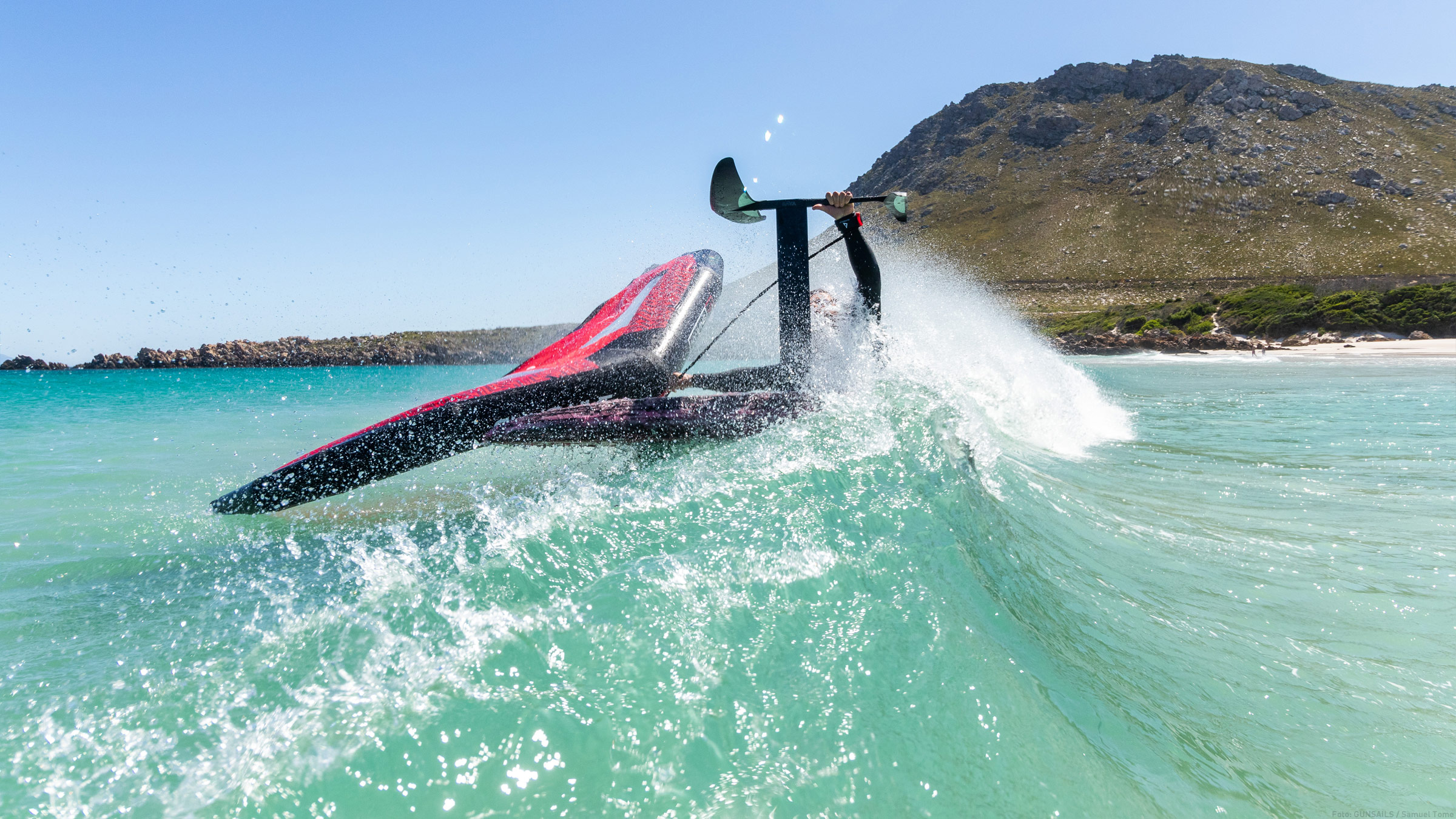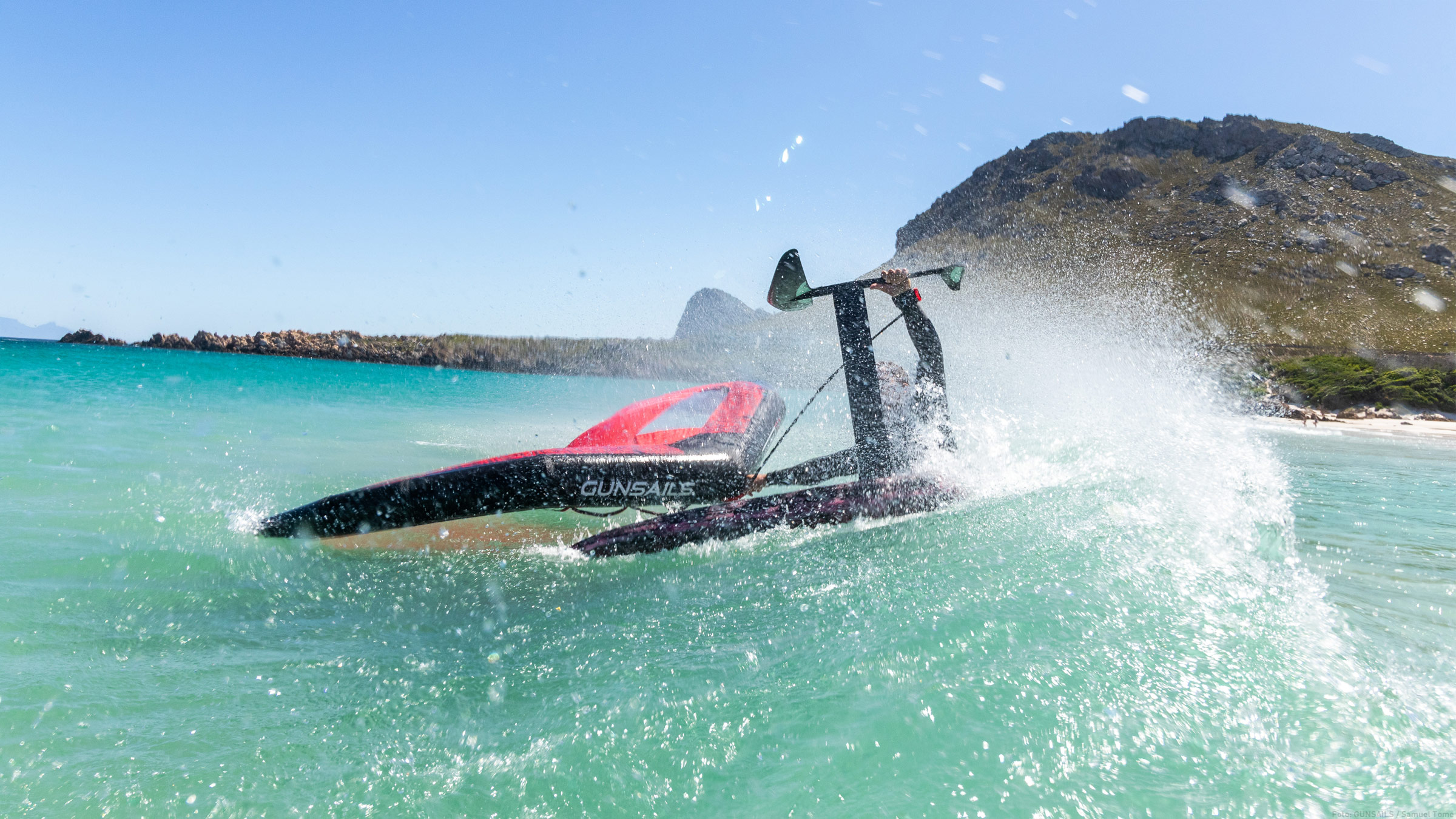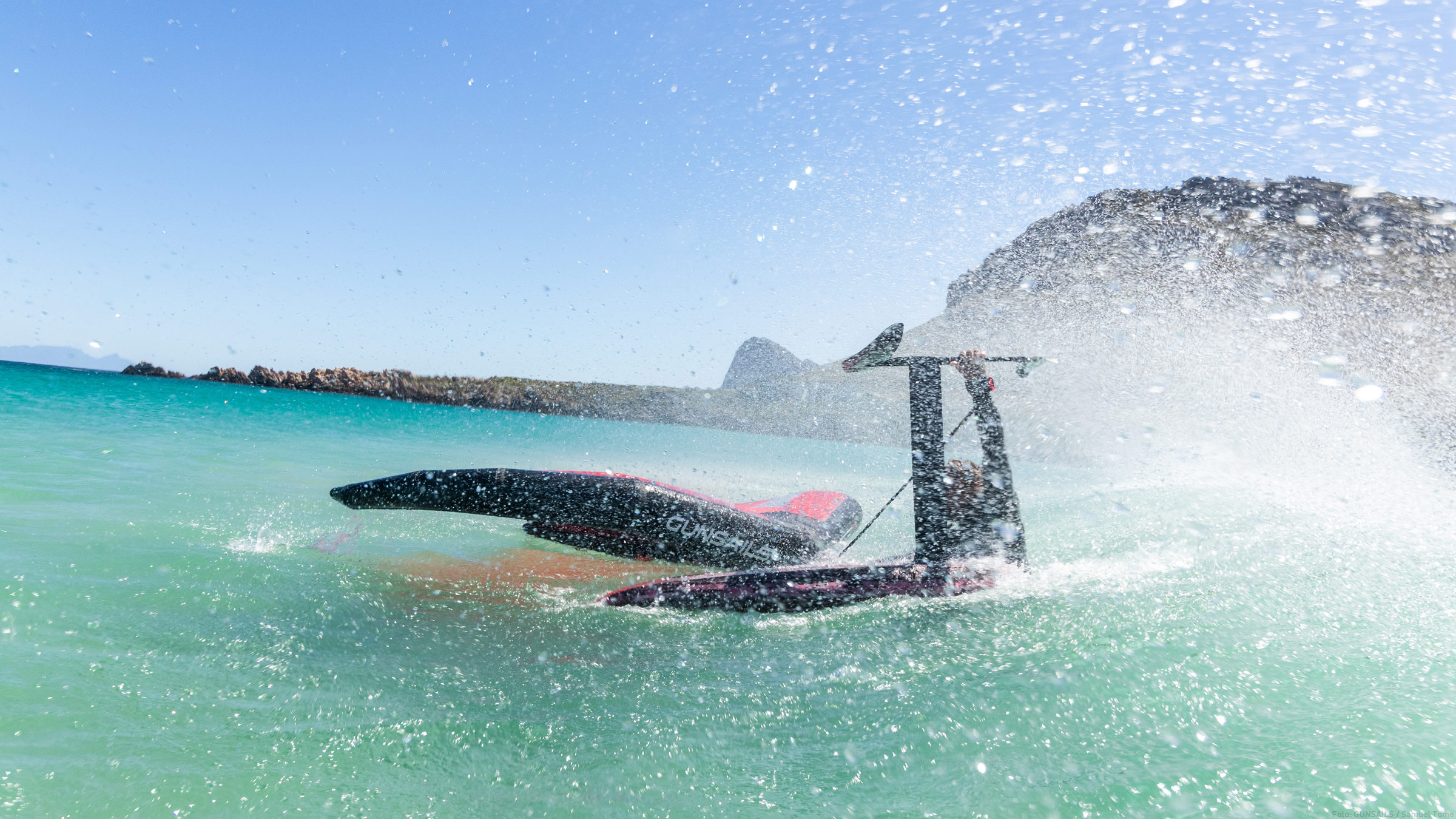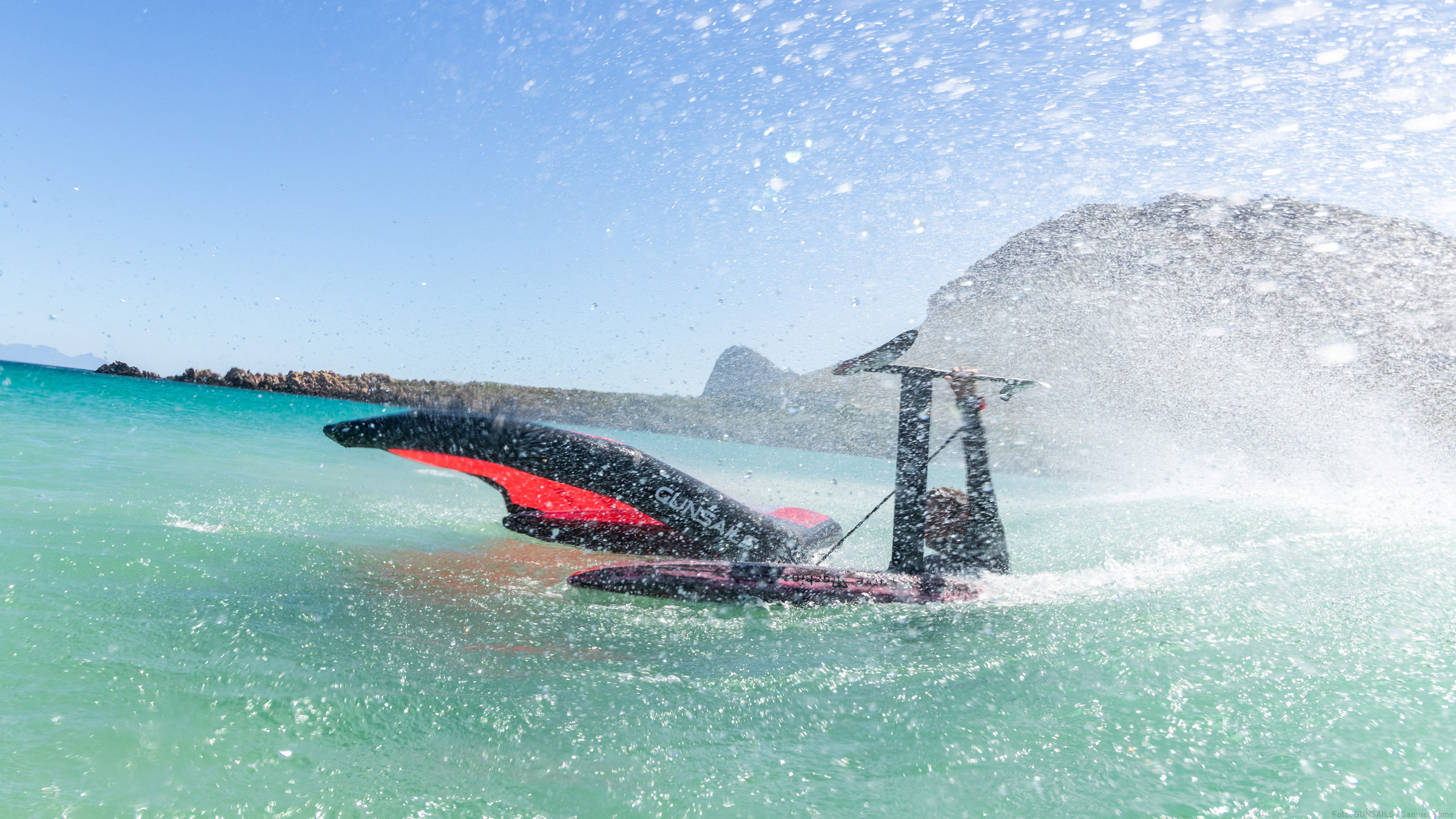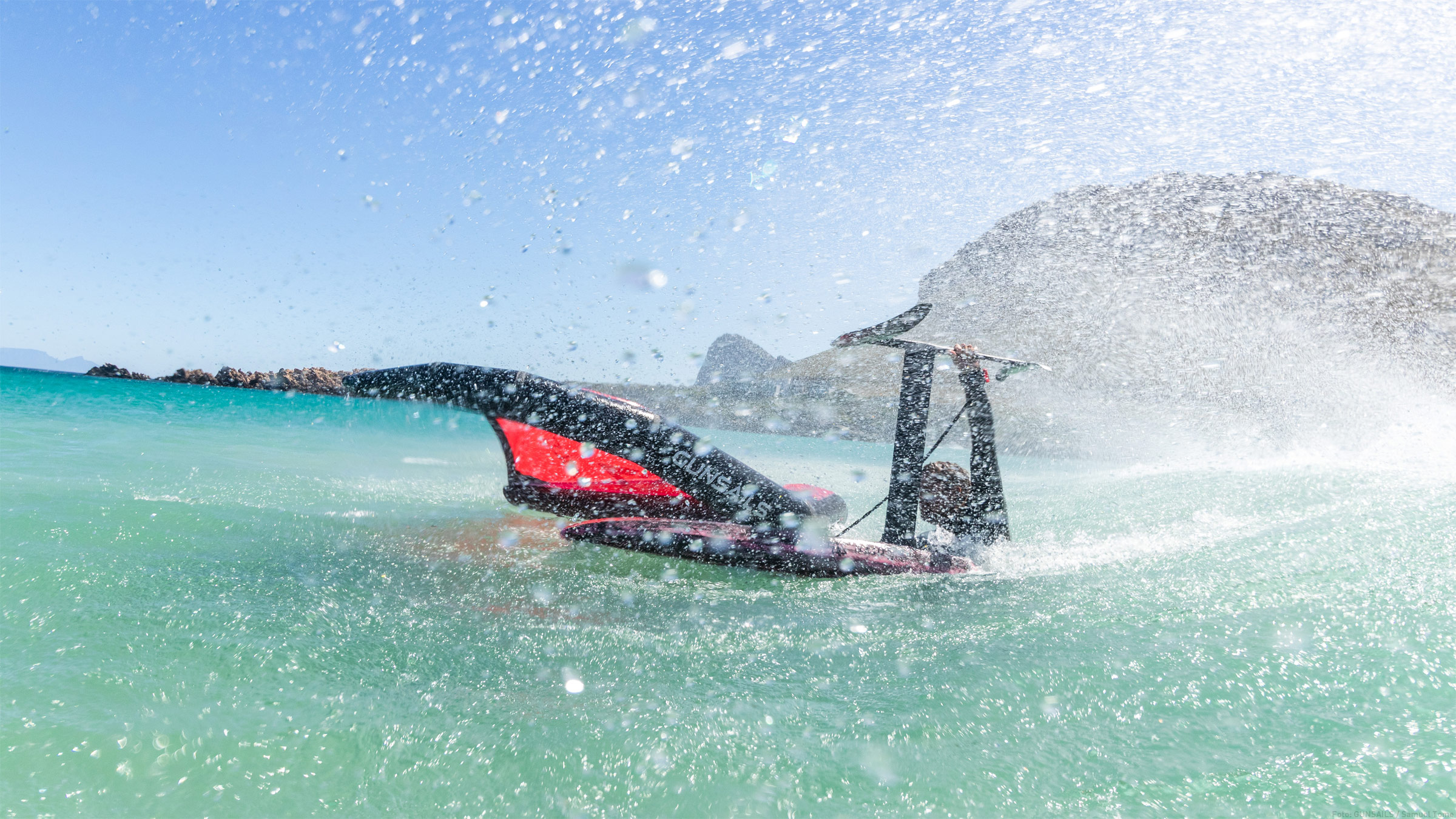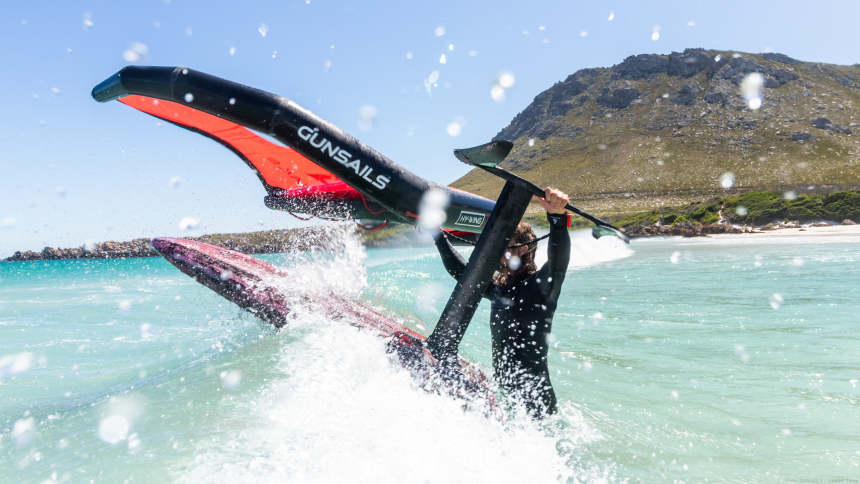
Tutorial
Crossing shorebreak
Entering the water with a wing and foil board in swell
Here, David Jeschke shows you how to get from the beach into the water with your board and wing in swell. At surf spots you can usually expect a shorebreak, the waves break exactly in the area where the water is knee to chest deep. So you have to get over there first before you can stand up on your board.
With wave heights as seen here, crossing the shore break is just about possible. If the waves are higher, you should start from a section of beach where the wave height is lower.
The wind direction also matters, as this determines which side of the body the wing must be held on. With sideshore wind from the right or left, the wing is held aside of the body. With a light sideoff - as shown here in the photos - the wind blows a little more from the land across the water. The wing must then be held higher so that the wave does not catch the trailing edge and push the wing towards the rider. If the wind is blowing more onshore, you would keep the wing flagged towards the land and thus get over the waves more easily.
Here are David's tips:
1. Lay your board on the deck upwind and hold it by the fuselage, behind the mast. This will help you to control the movement of the foil and avoid injury if the board starts to rock due to the swell.
2. Hold the wing on the opposite side (downwind) at the leading edge handle and try to maximize the distance between the board and the wing by stretching your arms. This prevents the foil from damaging the wing.
3. Align the board at a 90 degree angle to the wave
4. When the breaking wave comes closer, push the foil hand down a little and put pressure on the fuselage. This helps to lift the nose of the board and makes it easier to cross the shorebreak. Remember that it is important to place your hand on the fuselage behind the mast, otherwise the nose of the board will go down when you push it.
5. Make sure that the wing does not touch the water, stretch your body. You can also make a small jump just before the wave and make sure that both arms are still stretched.
6. Turn your body slightly to the side to minimize the surface area and resistance of your body to the wave.
7. After the peak of the wave, you can loosen the pressure on the fuselage but still hold it firmly. Keep trying to maintain the maximum distance between the board and the wing.
8. Once you have crossed the shorebreak and the water is deep enough, turn your board over, get on and get into the starting position.br>
In the event of losing control in a shorebreak, you should let go of the wing hand rather than the board hand and try to control the movement of the board so as not to be injured by the foil.

Wrong technique - you can't get over the shorebreak safely (except in very small waves)
The power of the waves should not be underestimated. In very small waves, e.g. wind waves at an inland spot, you can still carry the board sideways next to your body and hold it by the handle on the bottom of the board.
However, as soon as the wave gets higher than 30 cm, you should carry the board as described above. The photos above show what can happen with the wrong technique in a wave of just half a meter. Standing navel-deep in the water, the wave then rolls head-high towards you and can even rip the board out of your hand and swing the foil upwards uncontrollably.
28.02.2023 © WING DAILY | Text: David Jeschke, Jürgen Schall | Photos/Videos: GUNSAILS / Samuel Tome
Waves Crossing the shorebreak Level ★★☆☆ Rider: David Jeschke Text: David Jeschke Text: Jürgen Schall Photos/Videos: GUNSAILS / Samuel Tome DE




